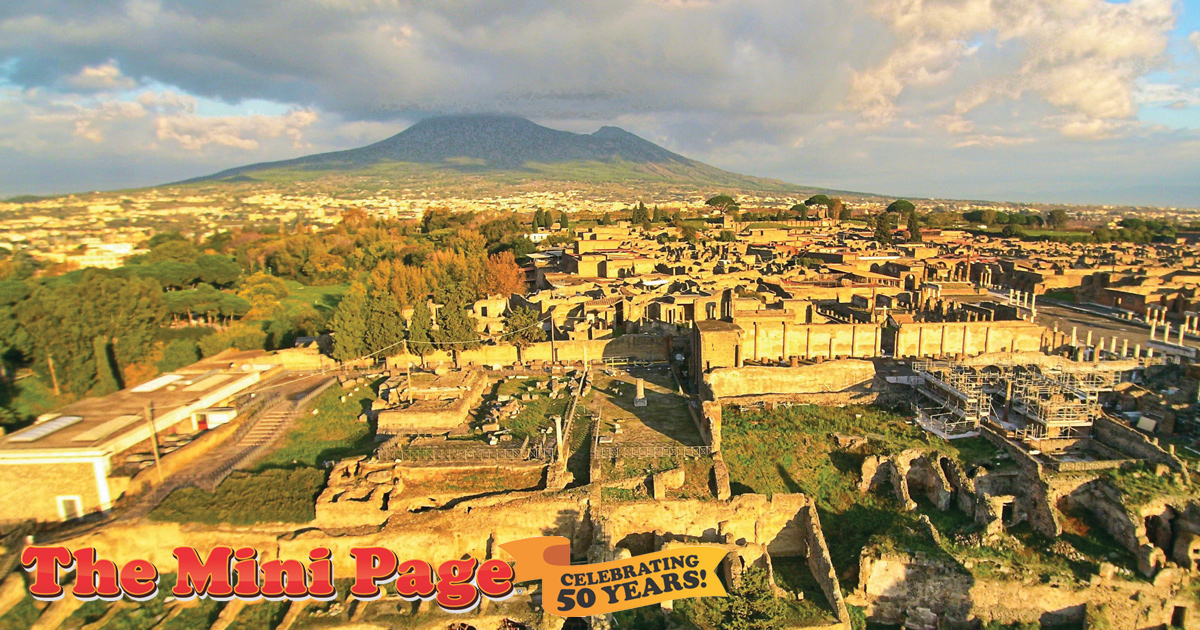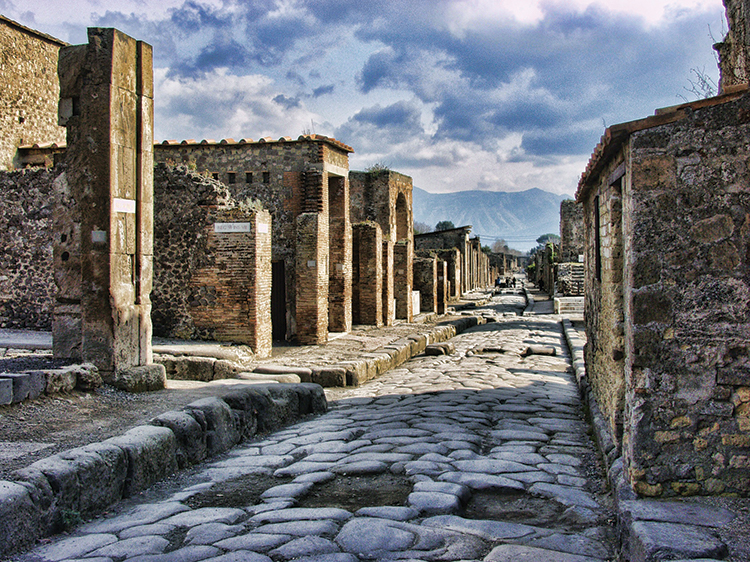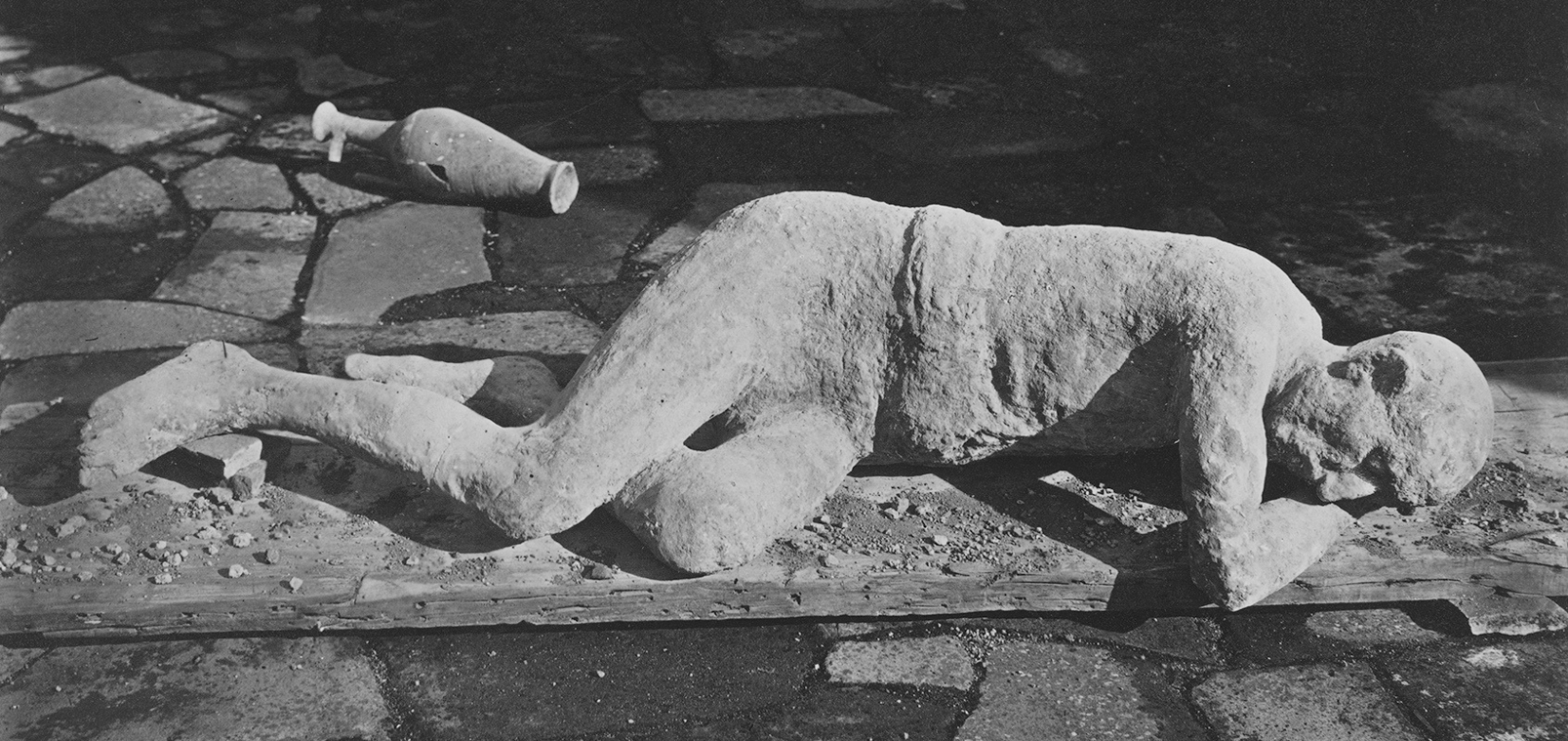
AMP | Kids is proud to announce an ongoing partnership with The Mini Page, now in its 50th year of providing engaging and fun learning opportunities to young readers across the country. This feature was originally syndicated in newspapers the week of August 17 – August 23, 2019. It is distributed digitally here with permission from Andrews McMeel Syndication. Enjoy and share with the young learners in your life!
On a regular day like this more than 1,900 years ago, citizens of a city in Italy were going about their business when a mountain about six miles away rumbled and then exploded.
Let’s learn about the city of Pompeii (pom-PAY) and Mount Vesuvius (veh-SOO-vee-us), the volcano that buried the city and many of its inhabitants on Aug. 24, A.D. 79.
Signs of trouble
Living so close to Mount Vesuvius, citizens of Pompeii were used to feeling earthquakes. In fact, in A.D. 62, a strong earthquake caused many buildings to fall down and streets to buckle. Builders, plumbers, and slaves repaired much of the damage over the next 17 years.
In the days before Aug. 24, people in Pompeii felt small tremors, or vibrations. Hanging lamps swung. Water stopped flowing from the aqueduct, a pipe for moving water. Birds flew away from the area.
The explosion
When Mount Vesuvius exploded, a large, dark cloud rose up from it. A man who lived across the Bay of Naples from Pompeii, Pliny the Elder, saw the cloud and wanted to get a closer look. He ordered his servants to prepare a boat and began sailing across the bay.
His nephew, Pliny the Younger, wrote these observations about the explosion:
“Ash was falling … (B)road sheets of flame were lighting up many parts of Vesuvius. … (People) tied pillows on top of their heads as protection against the shower of rock. It was daylight … but there the darkness was darker and thicker than any night.”
Buried cities

Archaeologists have uncovered much of the city of Pompeii, where visitors can walk along the streets and see stores and homes.
In Pompeii and nearby cities, ash and rocks rained down from Mount Vesuvius. Pompeii was buried in about 20 feet of the debris, or rubble. The city of Herculaneum, between Pompeii and Naples, was completely buried.
Experts think about 20,000 people lived in Pompeii at the time of the eruption. Only about 2,000 bodies were found when scientists began excavating (EX-ca-vay-ting), or digging, in the area.
Survivors of the volcano probably returned fairly soon to Pompeii and tried to dig for valuables buried in their homes or businesses. When they dug deep, they may have released poisonous gases. These vapors probably killed some of the survivors.
A scientific job
In 1860, the king of Italy turned over the excavation of Pompeii to an archaeologist named Guiseppe Fiorelli. (Archaeologists study the habits and ways of ancient people through the things they leave behind.)

This plaster cast of a man and a vase he was probably carrying was made in the 1800s. The casts were detailed enough to show facial expressions and clothing details.
A city preserved
The ash that fell from Mount Vesuvius hardened, something like cement, after many years. As the bodies of people and animals decayed, the hardened ash around them kept its shape. It was lightweight enough that it didn’t crush the remains.
Fiorelli discovered he could pour liquid plaster into the cavity, or opening, where the person’s skin and clothing used to be. This way he could create a detailed cast, or model, of how the person looked when he or she died.
Resources
On the Web:
At the library:
-
What Happened to Pompeii? by Charlie Samuels
-
Secrets of Pompeii by Tim O’Shei
Teachers: For standards-based activities to accompany this feature, visit Andrews McMeel Syndication. And follow The Mini Page on Facebook!
